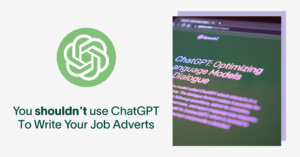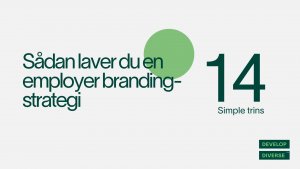How we communicate at work matters. Every word and every sentence we share — whether written or said — gets interpreted and understood depending on who the recipient is and how they identify. And because we’re communicating all the time, there’s a lot of room for what we say to be misunderstood.
Inclusive communication can help organisations bridge that understanding gap, because it encourages people to use language in a way that builds clarity, specificity, and means it’s accessible to the largest number of people.
But how do you know if your efforts are working — and what should you measure? In this post, Allegra Chapman, co-creator of DEI consultancy Watch this Sp_ce, explains how to measure the impact of inclusive communication across your organisation.
What is inclusive communication, and why does it matter?
“Inclusive communication means taking an approach with your messaging that will reach, resonate with and be understood by as many people as possible,” Allegra says.
“We tend to think of its impact predominantly in terms of people with disabilities and neurodivergent people, but the reality is that it affects everyone. Every human being has different learning styles, different approaches to work and different ways of communicating, so taking an inclusive approach means that your message will be more effective and impactful all round.”
When people don’t feel included, it can impact how we act and feel. According to research, feeling excluded can impact how we make decisions, and make us more likely to take risks. It can even change how our brains develop. We know from our own research that when just 0.6% of the language is biased in a job advert, it can impact a candidate’s likelihood of applying to a role.
But when you get inclusive communication right, the results can be incredibly powerful.
“One of the biggest indicators that you’re getting inclusive communication right is when staff feel empowered to talk about communication needs,” Allegra says. “When people have been given the language to talk about how they work and communicate, what can help them, and, crucially, that they understand how they can work in a way that will help others, you’ve got an environment where inclusive communication can thrive.”
3 ways to measure the impact of inclusive communication
So how do you get inclusive communication to thrive at your organisation — and how can you identify areas for improvement? You’ll need to track a mixture of both quantitative and qualitative data, says Allegra.
1. Measure employee attraction and retention.
At a baseline level, your first metrics on how inclusive your communication really is have to do with how language impacts people — including who joins, who stays, and who leaves your organisation.
“Recruitment and retention amongst [different employee populations, such as] neurodivergent people and people with disabilities will show you how accessible and inclusive your environment is for people with communication needs,” Allegra says. “Your wider recruitment and retention data will also be relevant, however, because communication impacts everyone. “Are you making your work environment accessible for them, and are they fully able to contribute and participate? If not, you’ll lose them.”
Get this right by
- Measuring application rates to understand which groups are most likely to apply to your roles
- Identifying candidate drop-out rates during your hiring process
- Monitoring attrition data to understand which employees are most likely to leave
2. Track employee sentiment using surveys and focus groups.
One of the best ways to understand how well your inclusive communication is working is to ask your existing workforce. Talking to your employees, and sending out a survey, will help you gather both qualitative and quantitative data on how included employees feel with your existing processes.
“[Use] surveys to ask staff how effectively communication tools and processes are working can be highly valuable to understand whether your current way of working is meeting different people’s needs,” Allegra advises. “You might also want to ask, through surveys, focus groups and interviews, whether staff feel able to communicate and collaborate with one another, and whether they feel able to provide input and feedback to the organisation.”
Surveys can also be a powerful tool for helping you identify any hidden communication needs across your organisation — meaning you
“Surveys, focus groups and interviews, [along with] an assessment of your current processes and platforms, will give you a baseline to measure from, and a clearer view of where the gaps are,” Allegra says. “You can then look at what you want to achieve, and start putting measurable SMART goals in place, and work out what actions will enable you to reach those goals.”
Get this right by:
- Asking neutral, open-ended questions that invite employees to share their opinions on how communication works at your organisation
- Inviting employees to share experiences anonymously through a free-text comment field
- Creating discussion groups across your organisation to enable greater open dialogue
3. Identify who accesses accommodations.
One key outcome of creating a more inclusive culture is that your employees feel safe coming to work as themselves. But if they don’t feel able to access accommodations or support that make their work experience feel more inclusive, then it’s a good sign that your communication might not be as inclusive as you think.
“Tracking not only whether you’re accommodating access needs, but also whether people who have a need for them are requesting adjustments and support can show you how inclusive an environment you’ve truly created,” Allegra says. “If people don’t feel comfortable talking about their needs, then it doesn’t matter whether you have the infrastructure to support them, you’ve still excluded them.”
Get this right by:
- Running an audit of different employee groups that access specific accommodations or other inclusion needs at your organisation
- Identifying which marginalised groups don’t tend to access extra support





